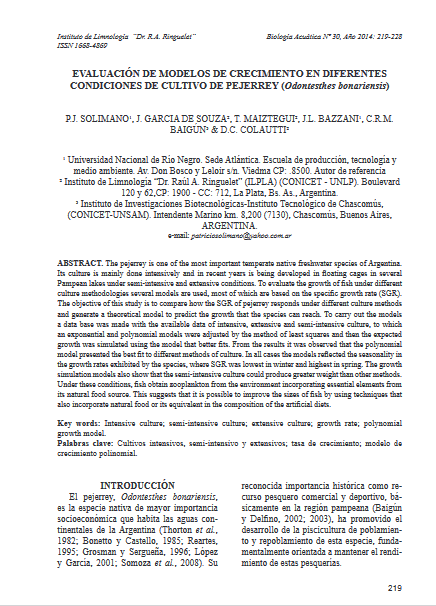Evaluación de modelos de crecimiento de diferentes condiciones de cultivo de pejerrey
Licencia: Creative Commons (by-nc-sa)
Autor(es): Solimano, Patricio; [et al.]
The pejerrey is one of the most important temperate native freshwater species of Argentina. Its culture is mainly done intensively and in recent years is being developed in floating cages in several Pampean lakes under semi-intensive and extensive conditions. To evaluate the growth of fish under different culture methodologies several models are used, most of which are based on the specific growth rate (SGR). The objective of this study is to compare how the SGR of pejerrey responds under different culture methods and generate a theoretical model to predict the growth that the species can reach. To carry out the models a data base was made with the available data of intensive, extensive and semi-intensive culture, to which an exponential and polynomial models were adjusted by the method of least squares and then the expected growth was simulated using the model that better fits. From the results it was observed that the polynomial model presented the best fit to different methods of culture. In all cases the models reflected the seasonality in the growth rates exhibited by the species, where SGR was lowest in winter and highest in spring. The growth simulation models also show that the semi-intensive culture could produce greater weight than other methods. Under these conditions, fish obtain zooplankton from the environment incorporating essential elements from its natural food source. This suggests that it is possible to improve the sizes of fish by using techniques that also incorporate natural food or its equivalent in the composition of the artificial diets.
[2014]
Compartir:
Una vez que el usuario haya visto al menos un documento, este fragmento será visible.


